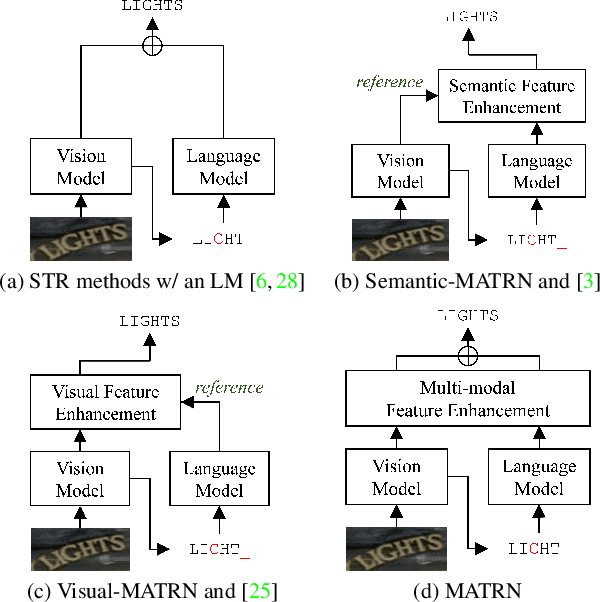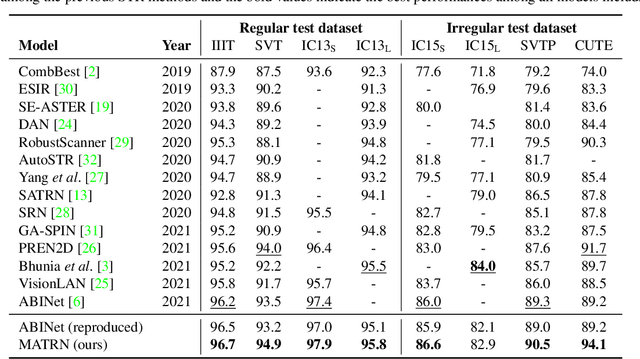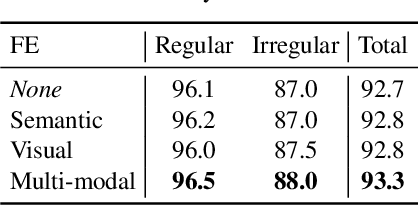Multi-modal Text Recognition Networks: Interactive Enhancements between Visual and Semantic Features
Paper and Code
Nov 30, 2021



Linguistic knowledge has brought great benefits to scene text recognition by providing semantics to refine character sequences. However, since linguistic knowledge has been applied individually on the output sequence, previous methods have not fully utilized the semantics to understand visual clues for text recognition. This paper introduces a novel method, called Multi-modAl Text Recognition Network (MATRN), that enables interactions between visual and semantic features for better recognition performances. Specifically, MATRN identifies visual and semantic feature pairs and encodes spatial information into semantic features. Based on the spatial encoding, visual and semantic features are enhanced by referring to related features in the other modality. Furthermore, MATRN stimulates combining semantic features into visual features by hiding visual clues related to the character in the training phase. Our experiments demonstrate that MATRN achieves state-of-the-art performances on seven benchmarks with large margins, while naive combinations of two modalities show marginal improvements. Further ablative studies prove the effectiveness of our proposed components. Our implementation will be publicly available.
 Add to Chrome
Add to Chrome Add to Firefox
Add to Firefox Add to Edge
Add to Edge